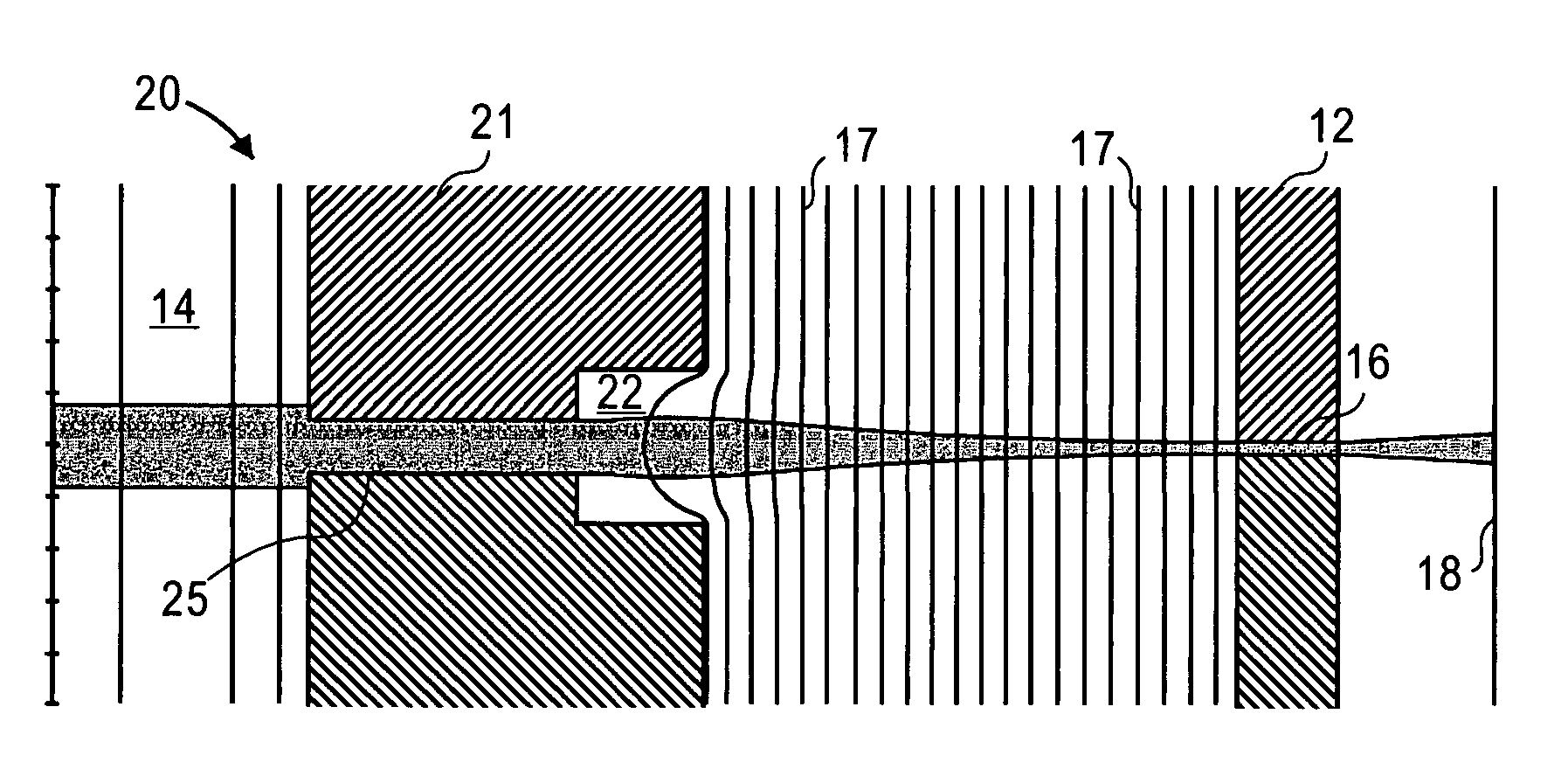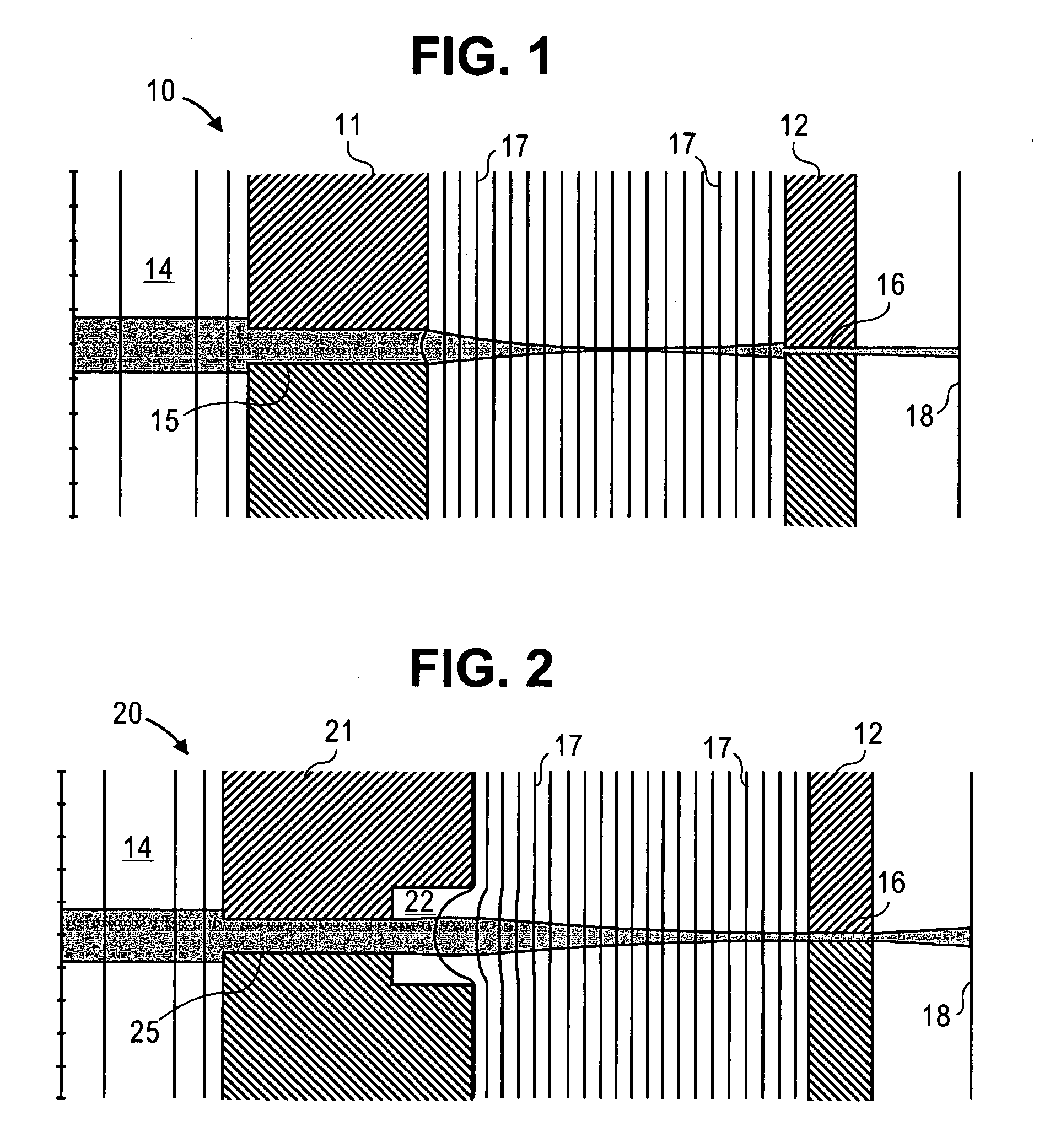Ion beam extractor with counterbore
a technology of ion beam and extractor, which is applied in the field of ion beam systems, can solve the problems of low throughput, prohibitive throughput, and insufficient optical lithography for the needs of the semiconductor industry, and achieve the effects of improving focusing, reducing aberration, and improving focusing in an extraction system
- Summary
- Abstract
- Description
- Claims
- Application Information
AI Technical Summary
Benefits of technology
Problems solved by technology
Method used
Image
Examples
Embodiment Construction
[0015]In a conventional FIB column, multiple electrostatic lenses are used to focus the ion beams. In order to get smaller feature size, small apertures have to be used to extract the beam. For the extraction of ions from a plasma source using a long narrow channel, aberration is always a problem because of the edge effect, and affects focusing.
[0016]The present invention changes the geometry of the extraction aperture to reduce aberrations and increase focusing. A counterbore is added on the downstream side to each aperture in the first electrode of the extraction system. This changes the shape of the equipotential lines at the aperture, reducing aberrations and increasing focusing. Thus the invention can use one single lens to achieve reduction image printing.
[0017]FIG. 1 shows illustrative beam trajectories calculated with the IGUN code for a prior art ion beam extractor system with a straight aperture geometry. Extractor system 10 has a first or plasma electrode 11 and a spaced ...
PUM
 Login to View More
Login to View More Abstract
Description
Claims
Application Information
 Login to View More
Login to View More - R&D
- Intellectual Property
- Life Sciences
- Materials
- Tech Scout
- Unparalleled Data Quality
- Higher Quality Content
- 60% Fewer Hallucinations
Browse by: Latest US Patents, China's latest patents, Technical Efficacy Thesaurus, Application Domain, Technology Topic, Popular Technical Reports.
© 2025 PatSnap. All rights reserved.Legal|Privacy policy|Modern Slavery Act Transparency Statement|Sitemap|About US| Contact US: help@patsnap.com



